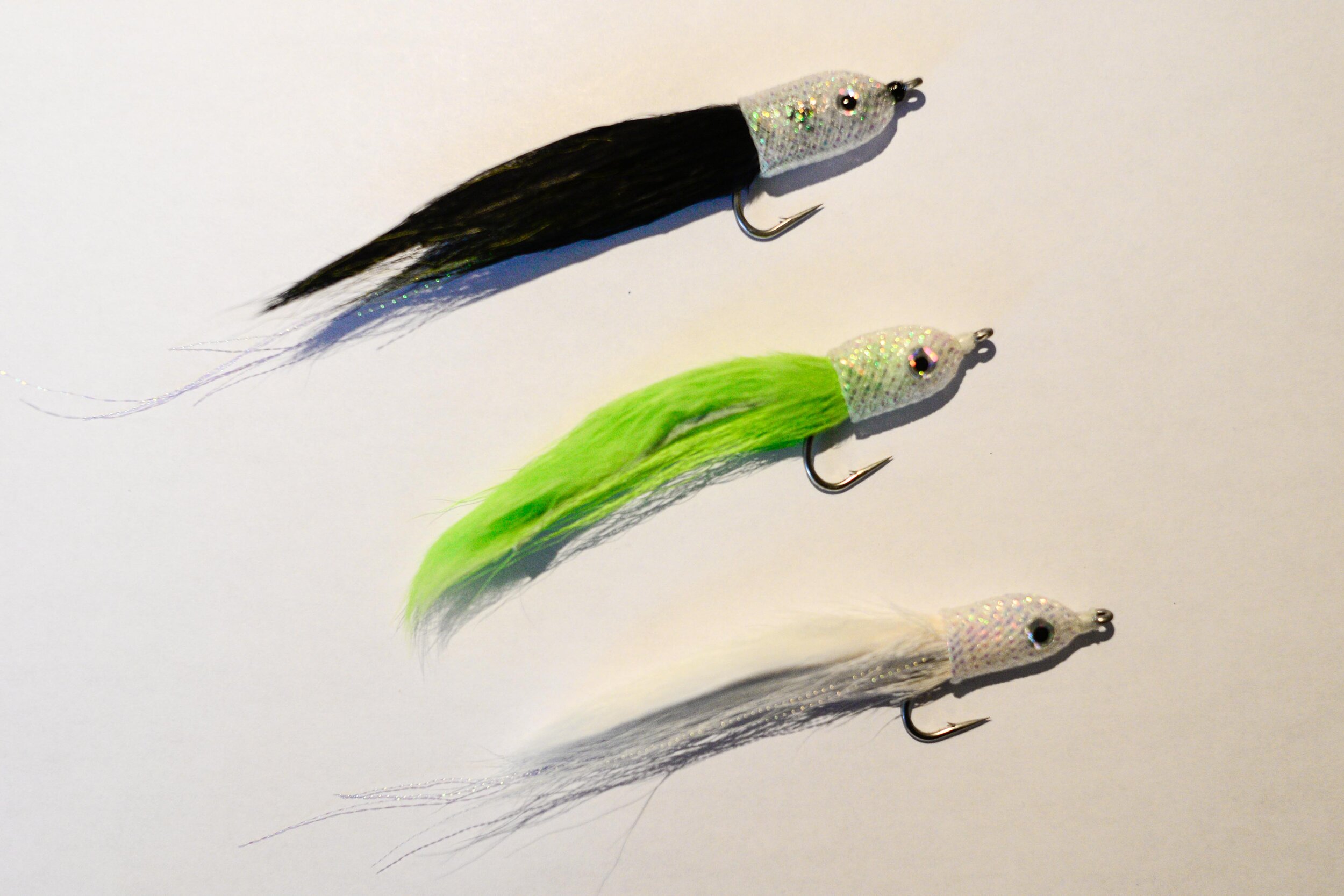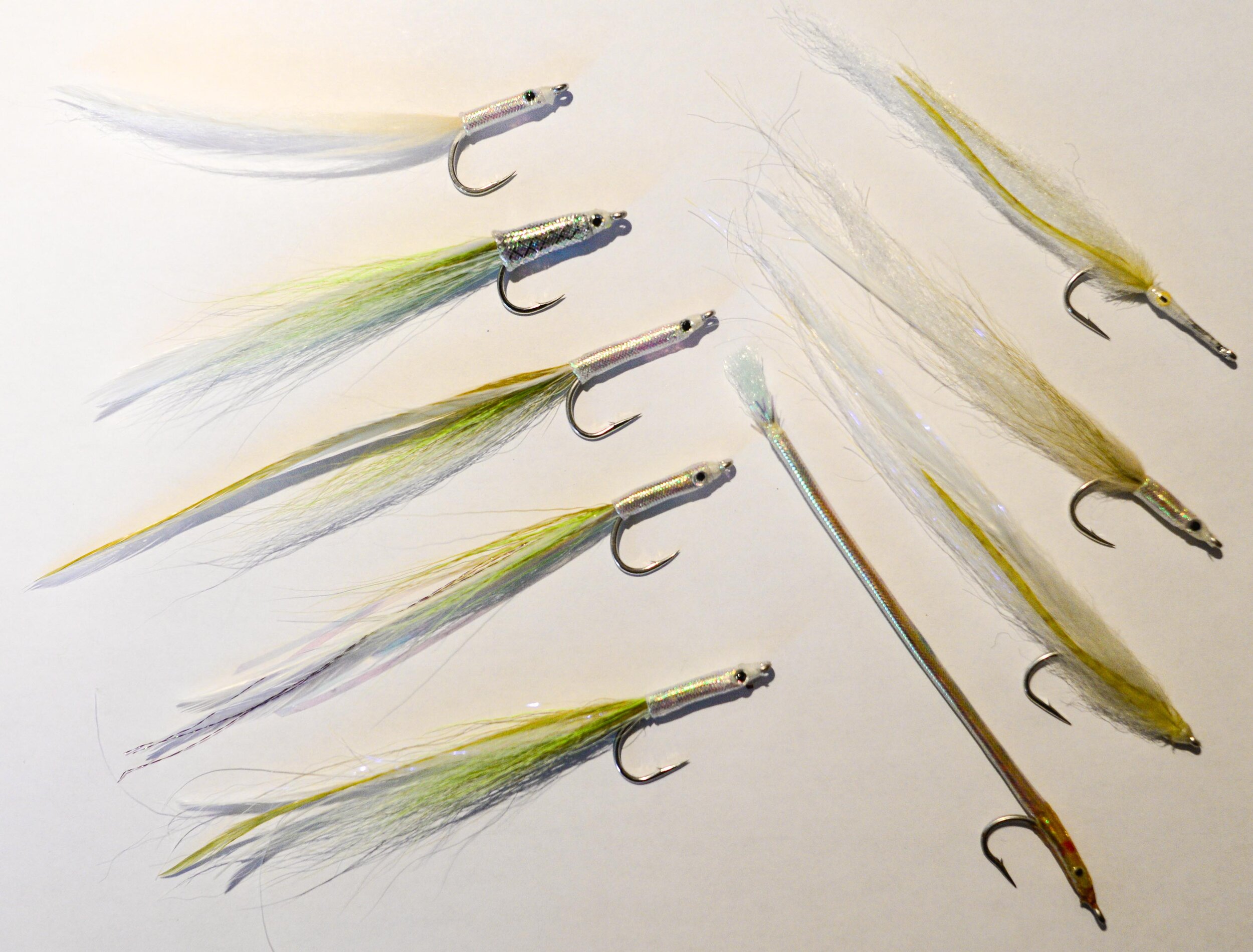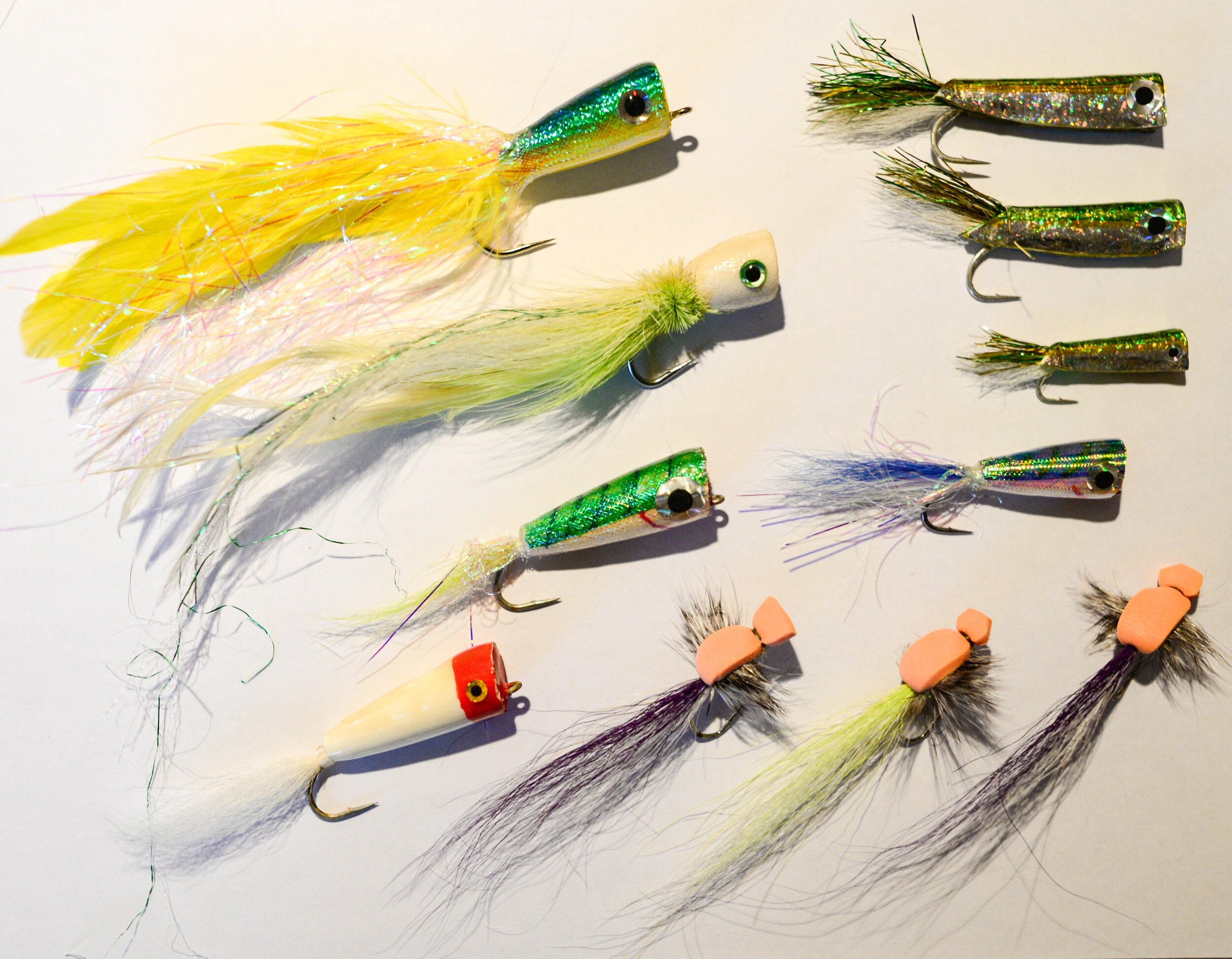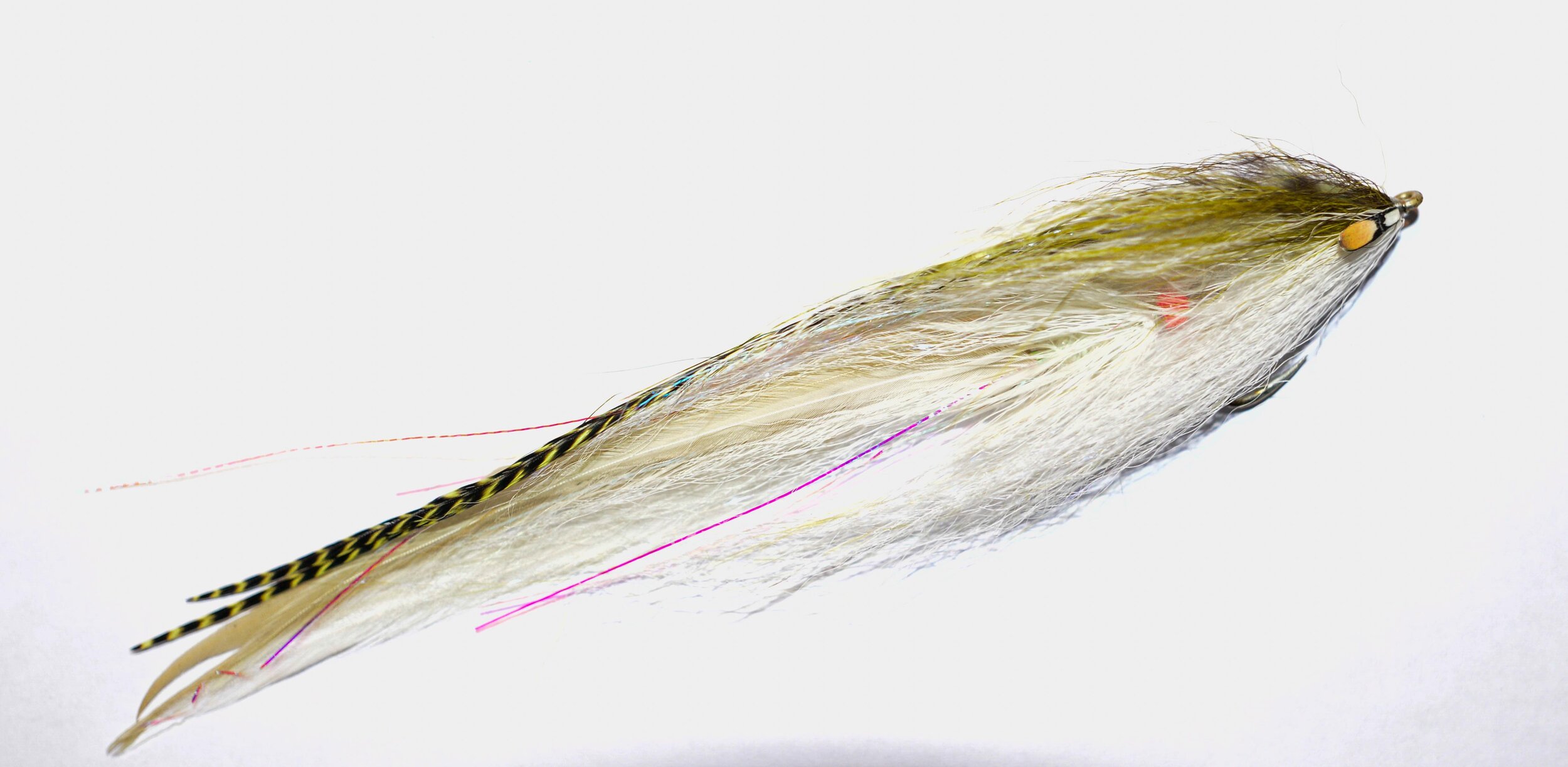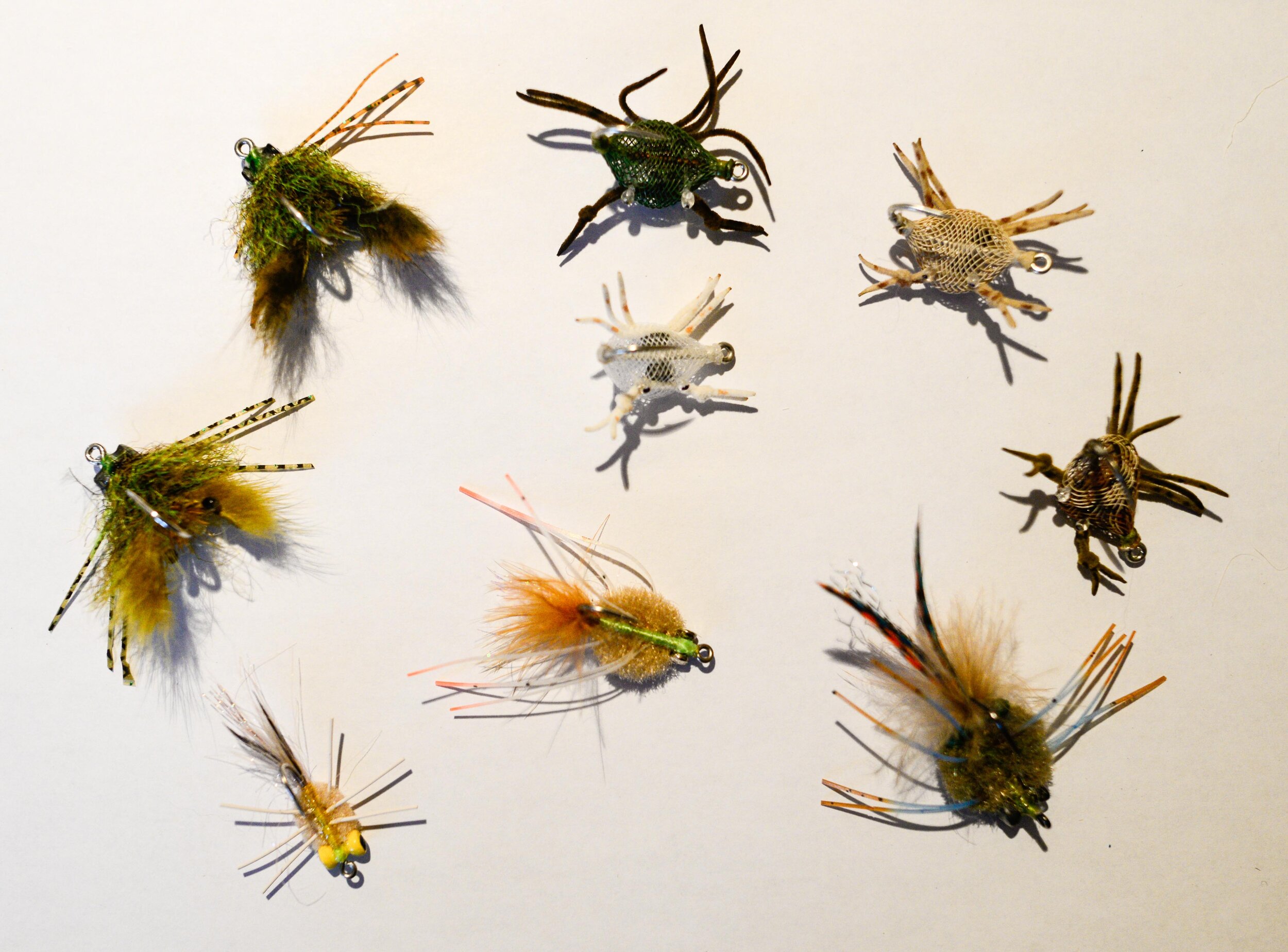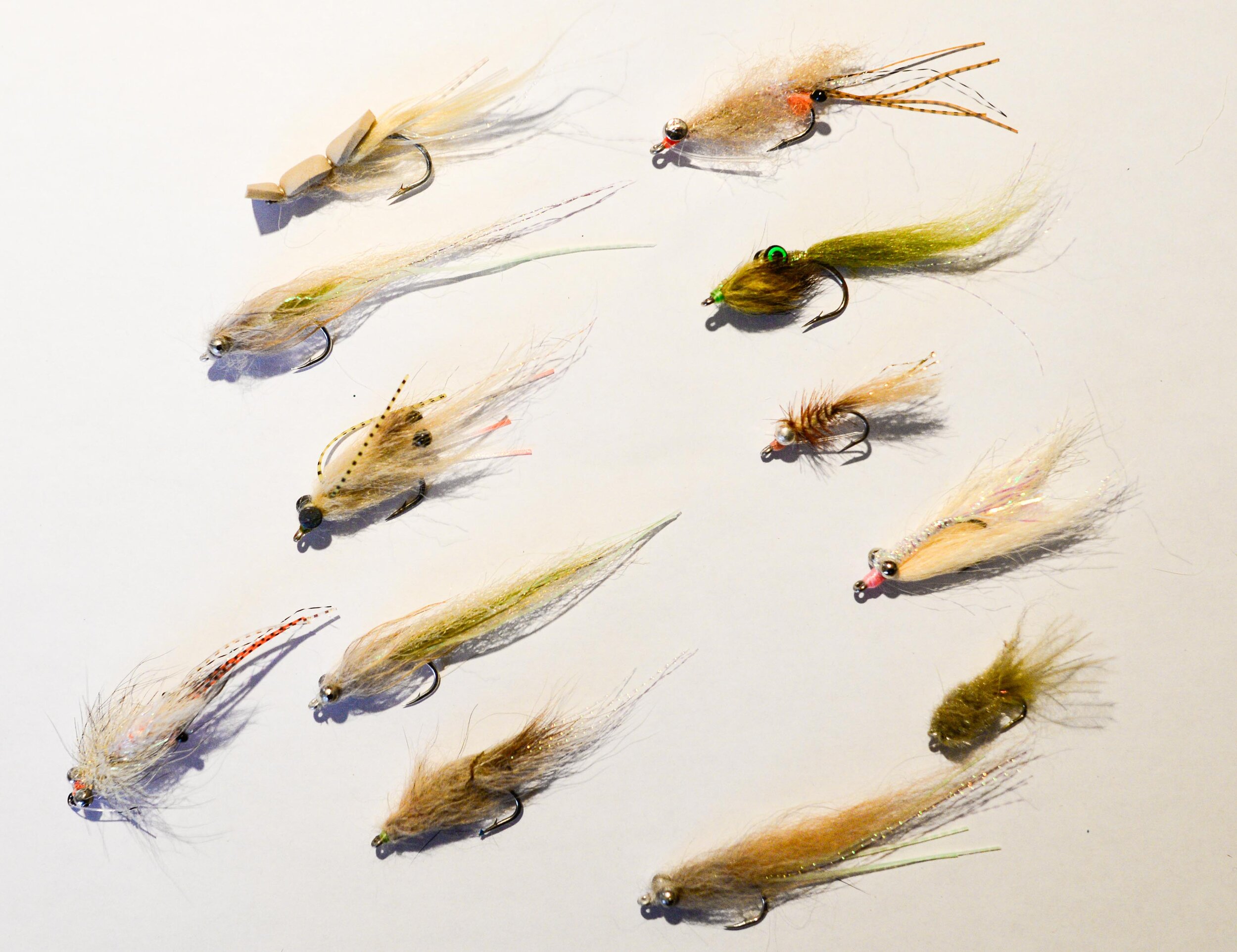Proven Flies for Maine Striped Bass
With the rising popularity of saltwater fly fishing, there are an overwhelming amount of different flies available on the market today. It can be a chore to interpret which flies are best for your target fishery. To help you prepare for your next striped bass mission in Maine let’s decipher which flies are essential and which ones you can keep on the bench for the season. I’m going to share what’s in my box, how I like to fish it and why. Lots of them will work for stripers up and down the east coast. Also, these patterns can be highly effective in different fisheries around the world. The flies below have all caught fish for me and prove to be essential throughout my season.
One thing I want to note is just how vital presentation is. You’ll fool more fish with a correctly presented bad fly than you will with a bad presentation of the perfect fly. It’s important to be 100% confident in your fly but focus on presentation like your day depends on it.
Rich Murphy’s Pamet Special
The pamet special, named after the Pamet River in Truro, MA, is a fly originally tied by Rich Murphy for striped bass in New England. I like to tie a variation of his original pattern that is pictured above. I have a black one for night, chartreuse as an attractor, and white as a more realistic day fly. I fish these flies at a length of about 6”. I tie mine with a small bunch of deer hair, flash, then finish with a rabbit strip. Rabbit strips move fluidly in the water and give the fly a ton of life. The biggest reason that this fly is in the box is because it “pushes” lots of water. The big head made from ez body tubing alerts stripers that bait is near. Fish pick up the vibration of the fly moving through the water on their lateral line. Now it’s up to you to trigger the fish to eat through a crafty retrieval.
This is a versatile fly that can fool fish in a variety of situations. I’ll throw this fly at our rocky Maine coast, estuaries, drop offs, and to busting fish. Pull this fly out when you want to let the fish know your fly is there. Incorporate a long hard strip every now again while retrieving this fly to make some extra noise.
Assorted Sand Eels
If you fish sandy areas for striped bass anywhere on the east coast you’ll want to keep a couple sand eels on hand. I carry a variety of sand eel patterns in my box in different lengths and colors and I vary the sparseness of how I tie each one. In general, I try to keep my sand eel patterns very realistic, sparse and seductive. Stripers can be picky when they are keyed in on sand eels so it’s important to closely match the hatch. These patterns range from 4” to 7”. Some of them are tied in a flatwing style with a single or double hackle feather tied in “flat” on top of the hook shank. Flatwings offer amazing movement in the water — even when the fly is paused the materials continue to undulate.
If you’re fishing over sand it’s likely that sand eels are close by. Understanding the time of year and the location you’re fishing will help you to tune your sand eels to fool the most finicky stripers. Try to find a natural sand eel, and as closely as possible, match your find. Watch how sand eels swim through the water and try to match their action. They undulate and can’t escape very well. I fish a slower realistic strip when fishing sand eels. Try a pause in your strip to trigger a following bass to strike… just be ready on the strip set.
Popovics Surf Candy
These 3” to 4” surf candy flies are durable and fishy as hell. Developed by Bob Popovics, these baitfish imitators very closely resemble spearing (silversides), small anchovies, and can even get by as a sand eel. They can be tied large or small depending on the bait you are trying to match. These flies are durable, very lifelike, and an easy fly to cast and present.
Pull out the surf candy in the blitz, while fishing beaches, and in elements when you are sight fishing and the stripers are on bait. Albies will also chomp this bug without a second thought as long as you’re matching what the fish are tuned into. Keep in mind that this epoxy body fly will sink because of it’s dense body. When you are pausing, this fly it will not hover and flutter, it will drop slowly in the water column.
Small Baitfish
These baitfish all range in size from 2.5” to 4”. Most of them are tied predominantly with natural materials and a little bit of flash. This is my small, unweighted bait collection. When backwater stripers are being picky this section of my box will get a look. These flies may resemble baits in the estuaries like mummichogs, small silversides, sand eels, peanut bunker, etc. I purposefully tie these patterns all a little differently so I can pick and choose the one that seems most appetizing on any given day. Each of these flies will hover in the water. They are tied with a rabbit strip, natural hair, sparse flash, and some have an ez body or head cement built finish. Rabbit is a favorite material of mine — it dances in the water and is very durable.
Weighted Bunny Fly
These flies fill in where clousers would go in most anglers boxes. Built with a rabbit strip tail, flash, palmered rabbit strip up the shank, and a heavy weighted eye, these bugs are attractor baitfish patterns that get deep and bounce up and down through the water column when stripped. This 3” or 4” fly might come out of the box when stripers are feeding deeper. These flies have the ability to take on different personas depending on how you fish them. Strip this fly fast to imitate a fleeing baitfish or sink this fly to the bottom on your favorite flat and strip slow to imitate a flats critter like a shrimp, crab or small flounder. This very simple fly can imitate a large variety of different types of bait — it all depends on your presentation and retrieve.
Top Water Flies
If you’re pulling one of these out of your box, you’re fixing to have a good time. Top water can be one of the most fun ways to catch almost any species on the fly. There’s something about seeing the strike that is a universal smile maker.
I carry a mix of poppers, crease flies, and gurglers. Poppers move lots of water and create a splash or a “pop” with each strip. Crease flies skip through the water, alternating from side to side creating the facade of a baitfish skipping across the surface. Lastly, gurglers, pictured in the lower right hand corner, slide through the water creating an enticing wake that hungry stripers key in on, especially during surface feeds and throughout the low-light hours of the day.
All of these flies will work when fish are actively feeding. Match the size of the bait as best you can and remember to pause on your strip and keep tension on your line throughout the presentation so you don’t miss the strike. Sometimes top water flies can also draw aggressive fish to feed on the surface even when there are no signs of surface action. Remember to be patient on the hook set. Many times anglers will see the fish waking after your fly or see the fish’s head come out of the water for the fly and the angler will initiate the set. Be sure to watch your fly disappear into the fish’s mouth before you decisively set.
Medium Baitfish Flies
These flies fall into the medium sized baitfish category and may imitate river herring or young mackerel. These flies are ALL tied with materials that undulate in the water. The movement of the materials is the most important characteristic for this set of flies. Also these flies are not weighted so they will hover in the water as the materials flow with the current. Each of these patterns are 6” to 8” in length.
These flies are great when targeting large bass and blind casting to the rocky coast. I love fishing these types of flies when wade fishing, whether I’m on a beach or standing on the rocks. These are versatile flies that do well in many different situations.
Flatwing Patterns
Flatwing’s were popularized by Ken Abrams and his book Striper Moon. Tyers like Joe Cordeiro continue the flatwing tradition because these flies move and hover in incredibly realistic ways. The flatwings above were tied by Joe Cordeiro and range from 7” to over 12”. What makes a flatwing is that the long hackle feathers are tied in flat on top of the hook. The feathers can be stacked multiple feathers high and other techniques can be incorporated to finish the fly like deer hair tied in hollow or building dubbing loops to wrap up the hook.
I go to the flatwing section of my box when I want a fly to flutter and hover in the current or when I’m fishing in crashing waves. One of my favorite applications is to throw a flatwing against the rocks when there is a nice clean swell rolling in. I time my presentations with the flow of each wave. As the wave rolls in and washes over the rocks, I deliver my fly. The fly washes in with the current and flows back out with the wave. I dead drift the fly as the wave recedes but I am very careful to keep my line taught so I can detect the strike which can be surprisingly subtle at times.
The Beast Fleye
Here’s one that every striper angler needs in their box. If you’re reaching for this fly there are likely big bass around who are feeding on menhaden aka pogies, bunker, mossbunker, etc. The past few seasons pogies have lined the coast of Maine and with these dense schools of protein come whales, bluefin tuna, and mature striped bass. When stripers are keyed in on pogies you’ll need a long fly with a big profile. The pictured beast fleye above is roughly 12” long with a 4” profile. The beast fleye is an innovative Bob Popovics’ pattern; it’s essentially a supersized version of his hollow fleye with a long piece of stiff mono coming off the shank of the hook so that the profile and length of the fly can be extended. Ben Whalley tied this specific fly; he is a terrific crafter of hollow fleyes.
This fly hits the water for me when striped bass are actively feeding on a school of pogies. These schools can have 1000’s of menhaden stacked up on eachother so the trick lies in getting your fly to the right spot at the right time. Observing the school will help to show you where the stripers are feeding or pushing the school. Watch the school for holes and also keep your eyes on the edges of the school for signs of the pogies being pushed. Deliver the fly ahead of where you observe bass and try some different retrieves until you come tight. Dead drifting and a slow retrieve is my go to as a starting technique but every situation is different and it all depends on how aggressively the bass are feeding.
Herring Hollow Fleye
Bob Popovics’ Hollow Fleye is one of the most effective patterns in my box. This one imitates a herring or any larger baitfish found in the Northeast. If I had to fish one fly all summer this one would definitely make it to the final four. Ben Whalley tied this one, as well. Between myself and clients, this exact fly has caught many fish and it’s still in awesome shape. Hollow fleyes are easy to cast, super swimmy in the water, create a nice profile, hover and push water. They can be tied in all sizes, shapes, and colors. Adapt your tie to what the fish you’re chasing are eating and this hollow fleye will quickly become a favorite of yours.
This is a killer pattern to fish on the coast where bigger bait fish are present throughout the season. I’ll cast this fly to the rocks, along points, and even sightfish with it along beaches. This is a great fly to fish deeper along structure on a sinking line. Last season, this fly caught me a 40” bass that was laid up in 3ft of water on an oceanside beach. As soon as the fly hit the water the smaller 40” bass beat a much bigger fish to the fly and the fight was on. I landed this fly two feet in front of the fish and immediately got the fly moving with medium length strips at a moderate pace.
Articulated Mackerel Hollow Fleye
Here’s a great Popovics’ hollow fleye variation, again tied by Ben Whalley. This 10” fly is tied hollow style and it’s articulated to give even more movement and action to the fly. The olive grizzly hackle on the upper wing helps to color this mackerel imitation in a natural and realistic way.
When mackerel are around, this is the fly to tie on. I prospect with this fly and spend lots of time blind casting patterns like this to the rocks. I use this fly in a similar manner to the hollow herring above.
Tinker Mackerel Hollow Fleye
Another great Ben Whalley tie, the tinker mack hollow fleye. Smaller, super easy to cast, and a perfect bite for hungry stripers throughout the season. Only 6” or 7” in length, this fly gets it done. Another great hollow fleye must have. Observe your local bait and tie up some hollow fleye variations that span the gamut of patterns you’ll need for your summer fishing pursuits.
Crabs & Shrimp
If you know me or have spent time on my boat, then you know my favorite element to catch any fish is sight fishing in shallow water. The shrimp and crab box is a necessity for me everyday. With our 10 foot tide in southern Maine we are constantly adjusting to the massive waxing and waning of the tides. I’ve spent 100’s of hours searching for places to fish striped bass in skinny water and nothing is more satisfying than presenting a crab to a waking fish on the flat and watching your bug get inhaled. This assortment will help to fool fish in most shallow water elements but it’s ALL about presentation… the cast, the placement, the subtle way you slip the fly into the fish’s world, the cadence of the strip and the detection of the bite.
Crab Fly Variations
The flats and shallow waters of Maine hold a plethora of crabs. Invasive European green crabs and Asian shore crabs have inundated our waters. These species are easy prey for striped bass. There are other types of critters that live in the sand and mud that your crab fly may also be mistaken for.
When sight fishing with crab patterns I like to lead the fish far enough so the fly has the chance to enter the fish’s world without detection and sink to the bottom. As the fish approaches I give the fly a little twitch and watch the fish’s reaction. If the fish picked up on your subtle presentation and is swimming to your fly and turns down, be ready to set when you see the bass’s gills flare and the fish turn. Avoid having slack in your system when fishing crab patterns. Land your fly in the water with your fly line tight and give a long strip to remove any additional slack. Watch the current and adjust your strip accordingly.
Shrimp Flies
There are a host of critters that live on the flats and beaches of Maine like sand shrimp, mysid shrimp, worms, and other little crustaceans. Stripers feed on these small bits of protein throughout the tide. They typically don’t have to move far or fast to capitalize on these morsels. Stripers cruise the shallows sucking in available prey that require the least amount of energy to consume… it’s all about availability and ease of access.
Most of these flies are weighted, with a length of .5” to 1.5”. I try to match the color of the flat when I am choosing a shrimp pattern. I’m generally sight fishing when I tie on one of these bugs but they can be effective in blind casting situations in estuaries, tidal rivers, etc, as well. Some of these patterns can also be deadly along the beaches where stripers cruise in the wash of the small breaking summer swell.
30” bass caught in 12” of water; sight fished on a crab fly by Ellis, 14 years old.
Now GO Fish
I am more than happy to answer specific questions about fly fishing for striped bass, gear, and any other fish that I’ve encountered throughout my travels and guiding work. Drop me an email or a phone call anytime and I’ll get back to you as soon as possible. One of my biggest passions is helping others to advance and be successful in the sport of fly fishing. That’s exactly why I have chosen the career of being a full time, professional fly fishing guide.
